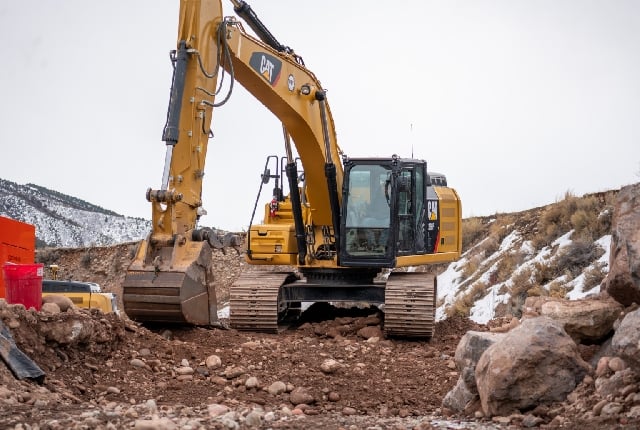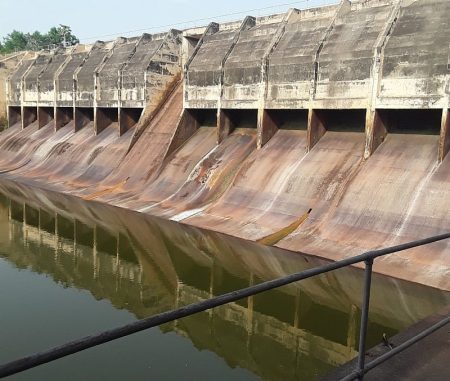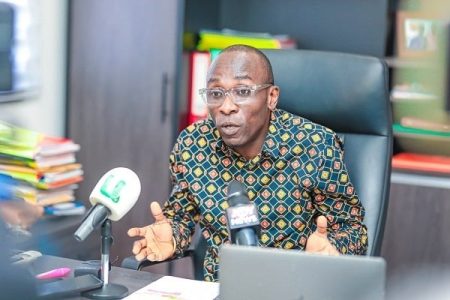The fight against illegal mining in Ghana, locally known as “galamsey,” has entered a new phase, with the government shifting its focus from on-site arrests to targeting the financiers and owners of heavy machinery used in these destructive operations. Defense Minister Dr. Edward Omane Boamah announced this strategic shift, highlighting the government’s commitment to dismantling the support structures that enable illegal mining, rather than simply addressing the symptoms. This new approach, driven by President John Dramani Mahama, aims to identify and hold accountable the individuals and networks profiting from environmental exploitation, ultimately restoring the country’s degraded lands. The move signals a recognition that a long-term solution requires addressing the root causes of galamsey, targeting those who supply the means for this illicit activity.
A key breakthrough in this new strategy is the successful identification of chassis numbers from seized excavators, equipment central to illegal mining operations. These unique identifiers provide a crucial link to tracing the ownership and import history of the machinery, allowing authorities to investigate who imported the excavators, who purchased them, and why they are being used in galamsey. This investigative process, facilitated by the Ghana Police Service, will uncover the individuals and networks behind the scenes, those who finance and equip the illegal miners. By targeting these individuals, the government aims to disrupt the supply chain of equipment, making it more difficult and risky for illegal mining operations to continue.
This new approach represents a significant evolution in the government’s anti-galamsey efforts. Previously, efforts focused primarily on arresting illegal miners operating on-site. While these arrests are important for immediate disruption, they do little to address the underlying infrastructure and financial networks that perpetuate the problem. By shifting the focus to the owners and importers of heavy machinery, the government aims to cut off the supply of essential equipment, effectively crippling the ability of illegal miners to operate. This strategic shift is a crucial step towards establishing a more sustainable and effective solution to the galamsey problem.
The impact of illegal mining on Ghana’s environment is devastating. Galamsey operations cause widespread deforestation, pollute rivers and water bodies with mercury and other harmful chemicals, and destroy agricultural lands. These environmental consequences have far-reaching implications for the health and livelihoods of Ghanaians, particularly those living in affected communities. By targeting the financiers and equipment suppliers, the government aims to curb the environmental destruction caused by galamsey, protecting Ghana’s natural resources for future generations. The long-term goal is to restore the degraded lands and waterways, mitigating the environmental damage already inflicted.
The government’s renewed commitment to combating galamsey reflects a broader recognition of the severity of the problem and the need for a more comprehensive approach. Illegal mining not only damages the environment but also undermines the rule of law and contributes to social instability. By holding the financiers and equipment suppliers accountable, the government sends a strong message that illegal mining will not be tolerated. This decisive action demonstrates the government’s resolve to protect Ghana’s environment and its people from the harmful effects of galamsey.
This new phase in the fight against galamsey represents a promising development in Ghana’s efforts to address this complex issue. By focusing on the financiers and equipment suppliers, the government is targeting the root causes of the problem, aiming to dismantle the support structures that enable illegal mining. This strategic shift, coupled with the successful identification of key vehicle details, offers a pathway to holding accountable those who profit from environmental exploitation and restoring the country’s degraded lands. The government’s commitment to this new approach signifies a crucial step towards a more sustainable and effective solution to the galamsey menace, ultimately protecting Ghana’s environment and the well-being of its citizens.














